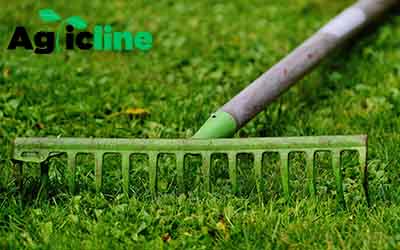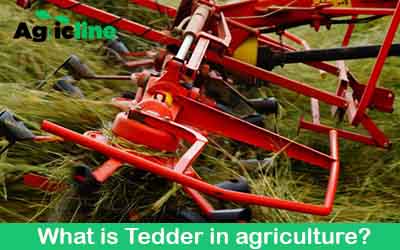A hay grapple, also known as a hay bale grapple or bale spear grapple, is a specialized attachment used in agriculture for handling and transporting hay bales.
It is typically attached to a loader or a tractor’s front-end loader and provides a secure and efficient way to move, stack, and load hay bales.
Functions of hay grapple
Here are some key features and functions of a hay grapple:
Grapple Arms
The hay grapple is equipped with two or more sturdy arms or tines that extend forward and downward from the attachment. These arms are designed to securely grip and hold the hay bales during transport.
They may feature curved or spear-shaped ends to effectively penetrate and grasp the bales.
Adjustable Width
Many hay grapples have adjustable arm widths, allowing operators to accommodate different bale sizes. The arms can be hydraulically adjusted to grip bales of varying diameters, ensuring a secure hold regardless of the bale size.
Hydraulic Control
Hay grapples are typically operated using hydraulic controls. The hydraulic system allows for precise and controlled movements of the grapple arms, enabling operators to open and close the arms to grip and release hay bales as needed.
Durability and Strength
Hay grapples are constructed with heavy-duty materials such as high-strength steel to withstand the demanding conditions of hay handling.
The robust construction ensures the grapple can handle the weight of multiple bales and withstand the forces encountered during lifting and transport.
Increased Efficiency
By using a hay grapple, operators can efficiently handle multiple hay bales at once. The grapple arms provide a secure grip, reducing the risk of bales falling or shifting during transport. This results in faster loading and unloading times, increased productivity, and reduced labor requirements.
Versatility
Hay grapples can be used to handle various types of hay bales, including round bales, square bales, or even wrapped bales.
Some grapples may have additional features or attachments to accommodate different types of bales, providing versatility for different hay handling needs.
Easy Attachment
Hay grapples are designed for easy attachment to loaders or front-end loaders. They typically utilize quick attach or quick coupler systems, allowing for convenient and rapid connection to the machinery.
Maneuverability
Hay grapples are designed to provide optimal maneuverability and control during operation. Operators can adjust the grapple arms to maintain a balanced load, ensuring smooth and stable movement of the bales.
Compatibility
Hay grapples are available in various sizes and configurations to suit different machinery and equipment. They can be compatible with loaders and tractors of different makes and models, providing flexibility and ease of use for farmers with diverse equipment fleets.
Types of Hay grapples
There are several types of hay grapples available, each designed to suit specific hay handling needs and equipment configurations.
Single Arm Grapple
This type of hay grapple consists of a single arm with a gripping mechanism at the end. It is typically used for handling individual large round bales or rectangular bales. The single arm design provides a secure grip on the bale, allowing for efficient loading and unloading.
Double Arm Grapple
A double arm hay grapple features two arms with gripping mechanisms on each arm. This design allows for the handling of multiple hay bales simultaneously. The double arm grapple provides increased efficiency and productivity by allowing operators to lift and transport multiple bales in one operation.
Triple Arm Grapple
Similar to the double arm grapple, the triple arm grapple has three arms with gripping mechanisms. It offers even higher productivity by enabling operators to handle a larger number of hay bales at once. This type of grapple is commonly used in operations where significant bale handling capacity is required.
Adjustable Width Grapple
Adjustable width hay grapples have arms that can be hydraulically adjusted to accommodate different bale sizes. This versatility allows operators to handle various bale diameters without the need for manual adjustments or multiple grapple attachments.
Squeeze Grapple
Squeeze grapples, also known as squeeze arms or clamping grapples, feature arms that can close together to compress the hay bales for a tighter grip. This type of grapple provides enhanced stability during transport and stacking, reducing the risk of bales shifting or falling.
Rotating Grapple
Rotating hay grapples have the ability to rotate or swivel, allowing for easier maneuvering of hay bales during loading, unloading, and stacking. The rotation feature provides additional flexibility and control in tight spaces or when precise positioning is required.
Stacker Grapple
Stacker grapples are designed specifically for stacking hay bales vertically. They often have longer arms and a wider opening to accommodate multiple bales in a stacked configuration. Stacker grapples enable efficient stacking of hay bales for storage or transportation purposes.
Customized Grapples
In addition to standard hay grapples, there are custom-designed grapples available to meet specific requirements.
These can be tailored to handle unique bale sizes, shapes, or weight capacities, allowing for specialized hay handling needs in specific farming or livestock operations.
Maintenance of Hay grapples
Proper maintenance of a hay grapple is crucial to ensure its optimal performance, longevity, and safe operation. Regular maintenance practices help prevent premature wear, address minor issues before they become major problems, and extend the lifespan of the equipment.
- Clean the Grapple: After each use, thoroughly clean the grapple to remove dirt, debris, and hay remnants. Use a brush or compressed air to clean hard-to-reach areas. Cleaning helps prevent corrosion, keeps moving parts free from obstruction, and maintains the overall functionality of the grapple.
- Lubrication: Regularly lubricate the moving parts of the hay grapple. Apply grease or lubricating oil to pivot points, hinge pins, and any other areas specified by the manufacturer. Lubrication reduces friction, minimizes wear and tear, and ensures smooth operation of the grapple.
- Check Hydraulic System: If the hay grapple operates using hydraulic power, regularly inspect the hydraulic hoses, fittings, and cylinders. Look for leaks, damaged hoses, or loose connections. Check the hydraulic fluid level and quality, and replace or top up the fluid as necessary. Follow the manufacturer’s guidelines for maintenance of the hydraulic system.
- Tighten Fasteners: Periodically check and tighten all fasteners, bolts, and nuts on the grapple. Vibration during operation can cause them to loosen over time. Ensure all connections are secure to prevent component failure or potential safety hazards.
- Weld Inspection: Examine the welds on the grapple for cracks or signs of fatigue. Welds should be intact and free from defects. If any issues are detected, have a qualified professional repair or reinforce the affected areas.
- Safety Checks: Regularly inspect safety features, such as locking pins or latches, to ensure they are functioning properly. Verify that all safety decals or labels are legible and intact. Replace any damaged or missing safety components as needed.
- Storage: When the hay grapple is not in use, store it in a clean, dry, and protected area. Shield it from the elements, moisture, and direct sunlight to prevent corrosion or damage. If possible, store it in a position that relieves pressure on the tines or arms to maintain their integrity.
- Operator Training: Ensure that operators are trained on the proper use and maintenance of the hay grapple. Provide them with the manufacturer’s instructions and guidelines, emphasizing safe operating practices, regular inspections, and reporting of any issues or concerns.



